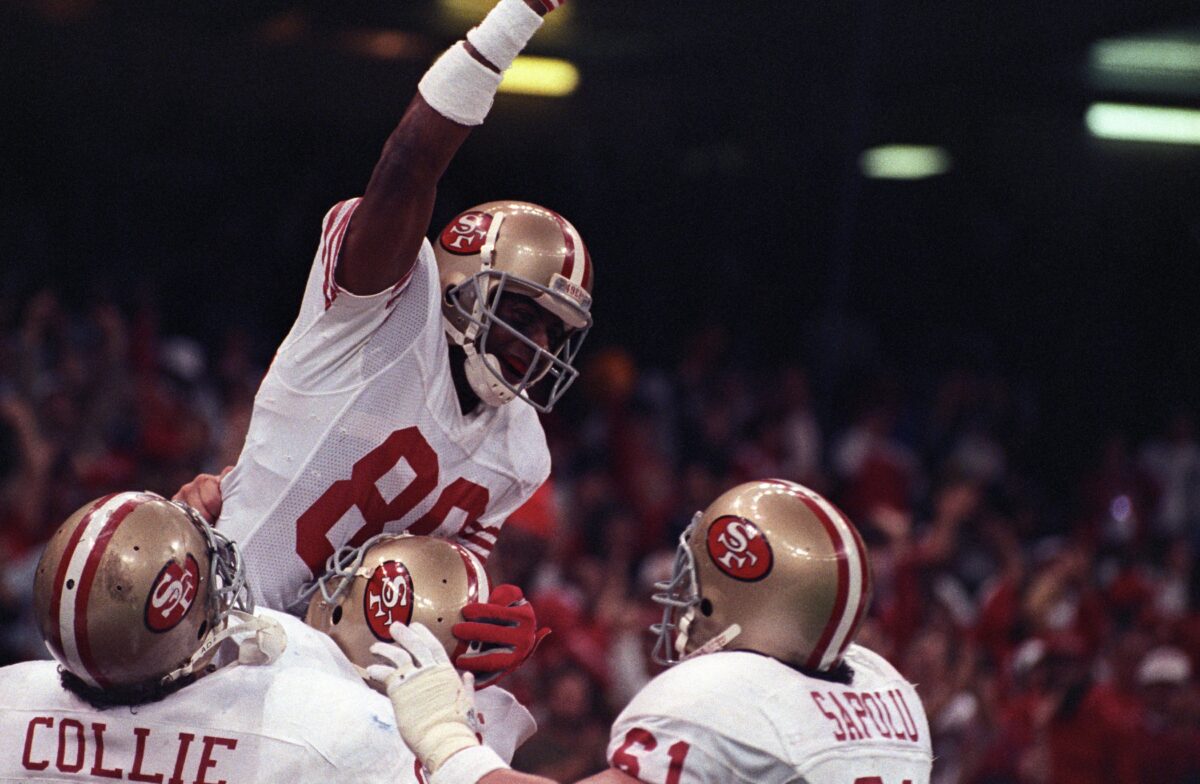Once upon a time, I had an opportunity to participate in an all-time mock draft featuring the game’s most legendary players. While many were picking quarterbacks, wide receivers, pass rushers, and corners with their early picks, I focused on the offensive line.
The line of scrimmage is where the game is won and I wasted no time building mine. The anchor of my offensive attack was none other than the seven-time Pro Bowler Jackie Slater.
Jackie Slater, also known as “Big Bad Jackie,” was a pillar of the Rams offensive line for 20 seasons. From 1976-1995, Slater played 259 games for the franchise, starting 211 of them.
On the football field, Slater did two things: Play the game with the physical and violent intent that it deserves to be played with and he fought for his teammates until the final whistle.
A native of Jackson, Mississippi, Slater played at Jackson State, an HBCU. Slater was critical in the success of the Jackson State rushing attack led by none other than Hall of Famer Walter Payton. Payton, a first-round pick, dominated in the NFL, leading to more eyes being placed on the program.
Slater would be drafted by the Rams in 1976. A third-round selection, Slater was named a starter during his fourth year in the league. At right tackle, Slater helped lead the Rams to Super Bowl XIV that season.
Slater would be a force to be dealt with over his career. Behind his blocking prowess, the Rams had one of the best offensive lines for years. Behind Slater, Eric Dickerson would put up four 1,000-yard rushing seasons in his four full years with the team. During Dickerson’s tenure, he broke the NFL rookie rushing record, single-season rushing record and playoff single-game rushing record. All three records still stand today.
Dickerson was also the leading rusher in the NFL in three of his four years with the team. Dickerson was Offensive Rookie of the Year, Offensive Player of the Year and a three-time first-team All-Pro, in part due to the lanes created by Slater.
Rushing wasn’t the only aspect of football that Slater helped the Rams produce. Jim Everett, former Rams QB and teammate of Slater for eight years, led the league in touchdowns in 1988 and 1989.
Speaking of Everett, when asked about Jackie Slater, this is what he had to say.
“Jackie Slater was a leader on and off the field. As a rookie, Jackie took me in as his own. He didn’t have to, he just did as a leader. Jackie played at a high level for more years than anyone I have ever met. Being successful in the field was no accident for Jackie Ray – our nickname for him or now – Father Time! Jackie was so prepared each week and that preparation was contagious to not only his position group but to everyone on the team. He wasn’t serious all the time, the man knew how to loosen the locker room and that too made him special. Kind of a coach in kids’ clothes. Anyways, I love the man as much today as I did back in the day. Good people and 100 [percent] trustworthy!”
Universally beloved by his teammates, Slater’s legacy to the Rams and football is undeniable. Slater would play until 1995 when he was restricted to just one game due to injury. Hanging it up after Year 20, Slater wasn’t quite yet ready to walk away fully from the game.
Slater would serve as co-offensive line coach for the Oakland Raiders in 2006. After leaving the Raiders, Slater would return to coaching, serving Azusa Pacific, a D-II level collegiate program in Los Angeles County, in the same role. He held that position from 2011-2018.
Slater has also been an active member in the NFL’s Play 60 program, an initiative by the league to promote physical activity in kids.
Slater and his wife Annie have two sons, David and Matthew. Matthew played college ball at UCLA before embarking on his own historic career with the Patriots. Like his dad, Matthew played with one team throughout his entire career, winning three Super Bowl titles with the franchise. A special teams ace, Matthew has five first-team All-Pro selections, three second-team All-Pro selections and 10 Pro Bowl selections. He played 16 years in the league before retiring after the 2023 season.
Matthew and Jackie also have another thing in common. Both have won the Bart Starr Award, given to the player who “best exemplifies outstanding character and leadership in the home, on the field, and in the community,” this award serves as a reminder of the type of man Jackie Slater is and the values he instills to those under him.
Slater was a four-time second-team All-Pro selection. He would go on to be inducted into the Rams’ Hall of Fame and then would achieve football’s greatest honor in 2001, a place in Canton, Ohio.
Alongside legendary Ram and teammate Jack Youngblood, Slater would stand on football’s greatest stage to revel in a lifetime of work. Having been there two years earlier to induct Eric Dickerson into the Hall, the man who put all before himself finally has the chance to stand in the spotlight and in his shining moment, do you know what Jackie Slater did?
He gave love and admiration to the people that got him there. Slater, the biggest, baddest and one of the best to ever play for the Rams. One of the best men to ever represent the team, as well.

